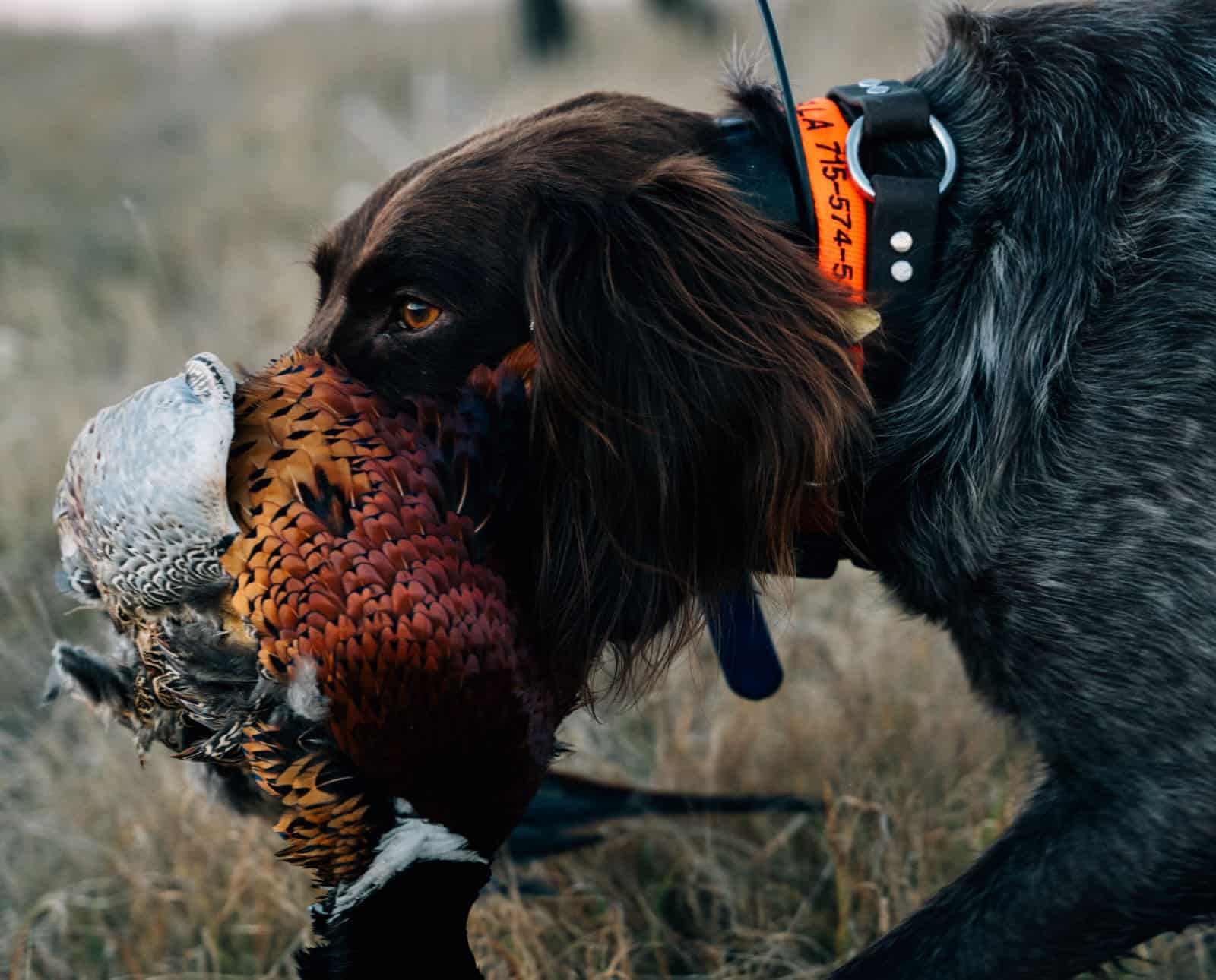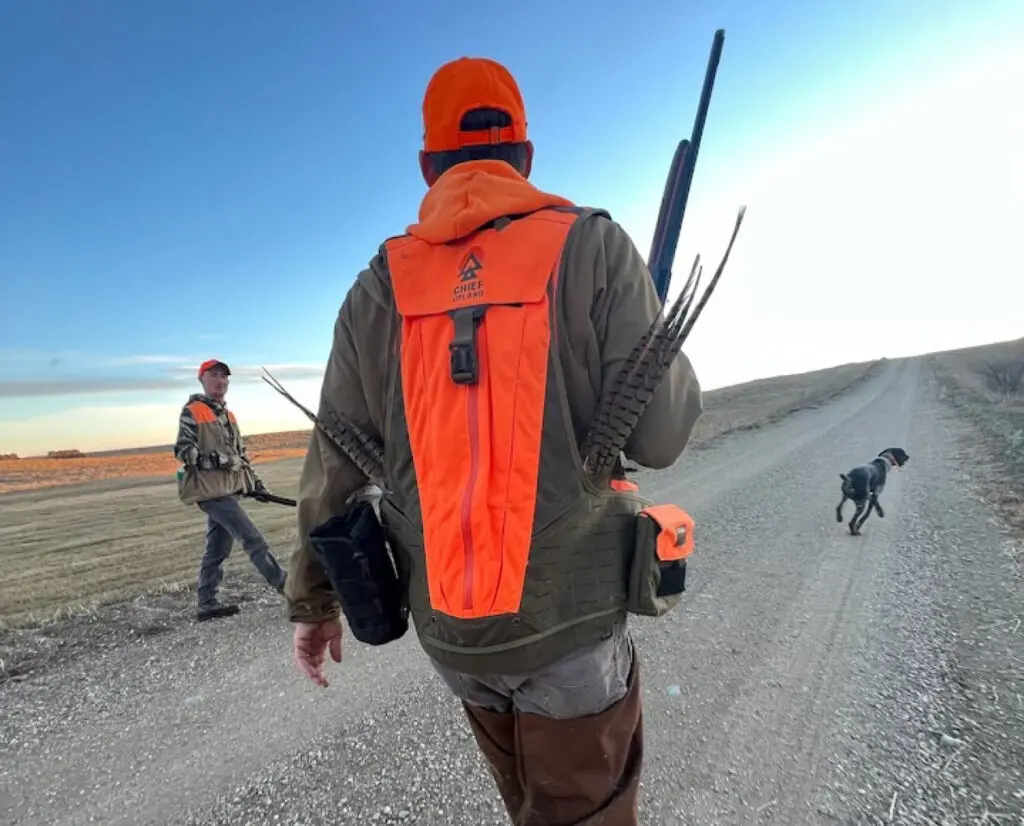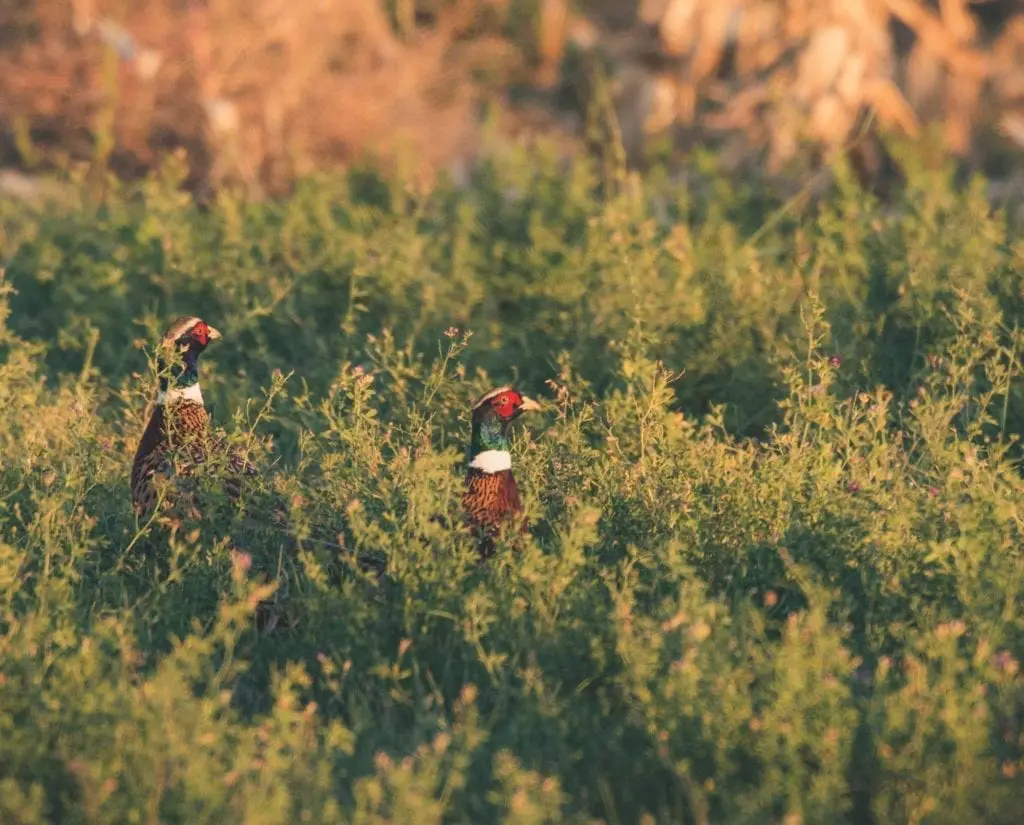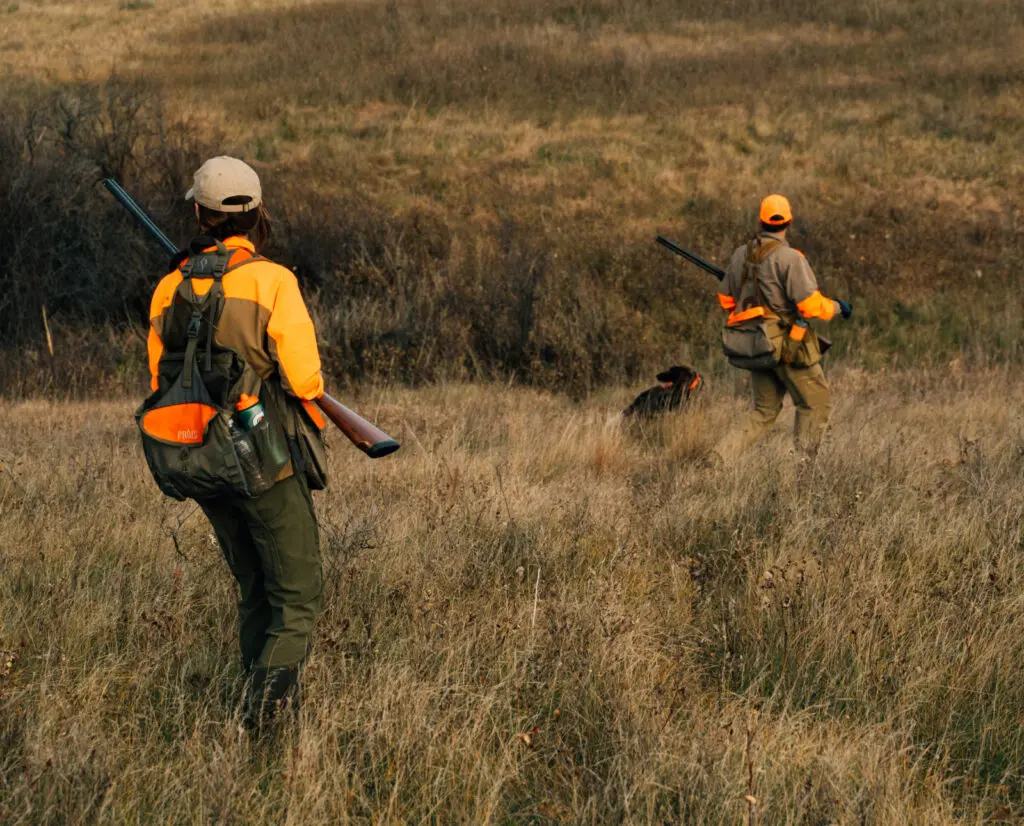Home » Pheasant Hunting » Tips for Hunting Early Season Pheasants
Tips for Hunting Early Season Pheasants

Raised in the upland bird mecca of Kansas, the passion…
Frank Loncarich has been a wildlife biologist for over 20…
During the early season, weather, habitat conditions, and hunting pressure impact which cover types pheasants use.
Thousands of hunters venture afield across the Midwest on the opening weekend of pheasant season. Opening weekend is a tradition, and regardless of the state agency’s pheasant population reports, hunters head out in pursuit of wily roosters. Although, in the case of opening weekend, plenty of roosters have yet to reach the status of “wily.”
Listen to more articles on Apple | Google | Spotify | Audible
The fact that early season roosters have yet to be educated on our hunting techniques doesn’t mean opening weekend guarantees limits of the colorful imported game bird. However, it certainly increases the likelihood of success when compared to the late season.

If the weather is mild, skip the heavy cover and opt for crop stubble, grasses, and weeds
In many states, the first frost occurs right around the opening day of pheasant season. If the frost hasn’t come yet, grasses and forbs are still actively growing in Conservation Reserve Program (CRP) fields, pastures, and everywhere in between. Actively growing grasses and forbs usually result in less-than-ideal scenting conditions for dogs.
If the weather is mild, ring-necked pheasants do not need to spend much time in heavy cover like cattails or CRP fields. In extremely mild conditions, birds may spend all day and night in crop fields, in both standing crops and crop stubble. Usually, a fair number of birds leave the crop fields in favor of roosting in nearby grasses or weedy cover; they just may not travel very far from the interior of large fields. Edges of crop fields that meet up with tall grass or weeds can be great starting places for a morning hunting party. I prefer to hit grass and weedy cover as early as possible in warmer weather because I know the birds won’t be there long.
Mid-morning and early afternoon pheasant hunting can mean increased options as birds scatter into various locations after they move from their roost sites. If hunting with a larger party, pushing crop stubble can be successful. Milo stubble is my favorite, but don’t pass up corn, sunflower, or wheat stubble. Oftentimes, a bird or two will hunker down at the base of a milo or corn stalk, offering a prime opportunity for a dog to lock up on point.
It’s usually ideal to position a few blockers on one end of the field because even uneducated birds don’t hold well in stubble fields. Be sure to consider wind direction, too, and work into the wind as much as possible.

Hunting Loafing Pheasants In The Early Season
Pheasants often loaf after their morning meal. They will use weed patches surrounding abandoned homes, old corrals, or similar sites. Many of these places are small and can be hunted quickly. I call these “jump out spots.” I hunt them like someone jump shooting a pond for ducks. I usually only take one dog, and we work into the wind. If I have other hunters with me, we will place shooters on the edges or corners while a hunter with a dog pushes through the center of the cover. Jump out spots are one of my favorite places to hunt and are often overlooked by larger groups of hunters.
Linear features like tree rows also provide prime loafing areas, allowing birds to sun themselves while remaining safe from aerial predators under the protective canopy of the trees. For smaller hunting parties, one hunter on each side of a tree row can provide some quick action, especially early in the season when many birds haven’t yet developed their Houdini-like escape tactics. Larger parties can make use of tree rows and scrubby draws as well. Use the extra hunters to stage blockers at the ends of tree rows.
Some draws have a point midway where the woody cover changes direction. These points are a common location for running roosters to attempt an escape. Setting a blocker can yield an extra bird to two.
Mild weather and early season can also mean some crops have yet to be harvested. Unharvested crops mean more space for birds to spend the day. Additionally, hunting taller standing crops like corn or sunflowers is incredibly difficult. It’s hard to keep an eye on your hunting party and dogs, not to mention mounting and swinging your shotgun is nearly impossible in a tangled mess of drooping sunflower heads or dry corn stalks. Many state regulations do not allow hunting in walk-in areas until the crops are harvested.
If you know birds are using standing crops, try to find adjacent locations to plan an attack. Weedy fence lines, center pivot corners, and waterways can provide opportunities to catch birds first thing in the morning or while they are loafing midday.
If the weather is really warm and dog stamina is a concern, midday hunts are also the perfect time to rest a few dogs. Hunting a tree row can be done effectively with one or two dogs and doesn’t require emptying the entire dog trailer.

Avoiding Other Hunters
The first few days of pheasant season probably account for over half the days afield of the entire season. Hunters flock to places like Kansas, Nebraska, and the Dakotas in hopes of bagging a few of these charismatic birds. As a result, it’s not uncommon for pheasants on public land to be hunted multiple times a day.
As you can imagine, if you are part of the third or fourth hunting party to enter a field on a given day, your success rate will likely suffer, resulting in little or no harvest. Hunting obscure locations or habitat areas that are more difficult to access can put a few birds in your vest. Fields that require a long walk are good places to target once the morning hours have passed.
Pastureland should not be overlooked during early season outings. Pastures normally considered ideal for prairie chickens or sharptail grouse can hold a few pheasants during this time. Some pheasants are in pastures during the early season simply because the weather has not yet forced them into areas with heavier cover or row crops. More pheasants move into pastures when their usual hangouts get swarmed by throngs of orange. Look for lower swales where wetter conditions have created a bit more cover if the rest of the pasture is grazed short. Brush clumps can also hold birds trying to escape hunters and hawks.
If you are fortunate enough to hunt pheasants on private land, you can control the hunting pressure if you have enough areas to hunt throughout the day. Often, if birds are roosting in CRP fields, making the first walk of the morning at dawn is the best chance to start the day with a rooster or two in hand. Some birds will stay within the CRP field after a hunting party pushes through. However, many birds scatter into the surrounding habitat. All the aforementioned locations, like crop stubble, tree rows, and abandoned homesteads, come into play now. Pursuing those same birds later in the day in these satellite pieces of habitat can add more birds to the tailgate pic.
The pheasant opener continues to be a great tradition for families and friends to gather together across the pheasant’s range. If success is eluding your hunting party by noon on opening day, try something different. Consider some new strategies or hunting spots and maybe, just maybe, you can seal the deal on an extra bird or two by the end of the day.
Raised in the upland bird mecca of Kansas, the passion for upland birds was born at a young age for Kyle Hedges. He has now spent over 25 years managing upland game habitat on public lands in Kansas and Missouri for State Conservation Agencies. He also works as a Habitat Consultant for Land and Legacy, assisting landowners across the country with improving their properties.
Frank Loncarich has been a wildlife biologist for over 20 years, specializing in bobwhite and grassland management. He is also a Habitat Consultant for Land and Legacy.




thanks for the tips – curiously dogs not once mentioned – understood most pheasant hunters only take dogs along to retrieve – some of us run pointing dogs on them as a training challenge – never load till the dogs are steady on point and honor, or moving up on a steady stop to flush looking for stay behinds – can be tough working birds that run so much – where I hunt pheasants, limit is 2 – why not make them both perfect ? approach it with a comprehensive training attitude: let the wild flushes go – never shoot one – birds training the dogs – only reward the dogs with a retrieve when their performance is perfect – steady through wing, shot, fall, then released to retrieve
Hey Jack, are you training dogs or hunting pheasants. I have been running Brittany Spaniels on pheasants (and Huns and Sharptails) for more than 25 years and I have never not taken a rooster because of an ‘unsteady point’. I love it when my dogs do everything right and things go perfect but I’m hunting not running a field trial.
Funny thing this year have not run into juvenile birds. My Griff and me have seen nothing but wiley roosters. Runners! Might be the warm weather we are having in ND.